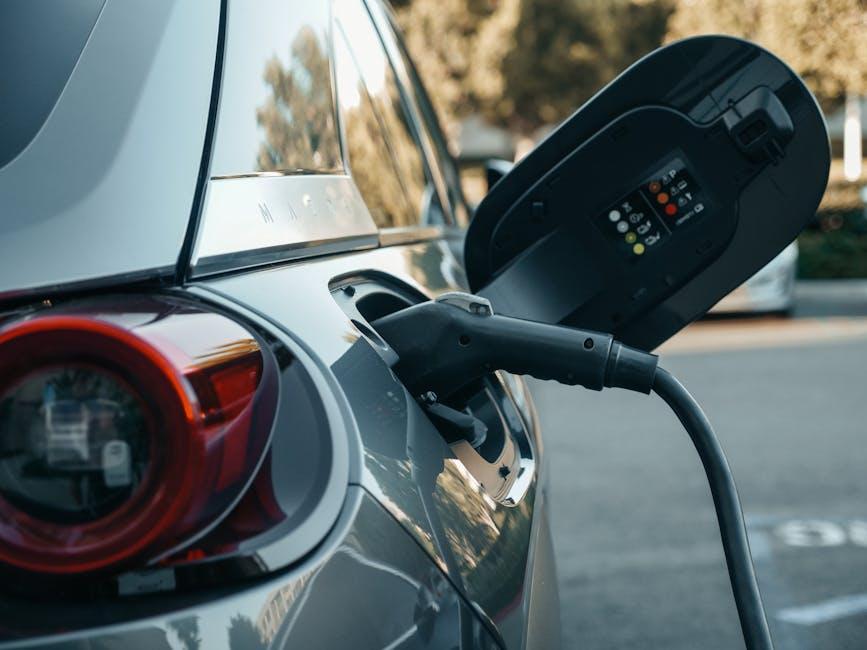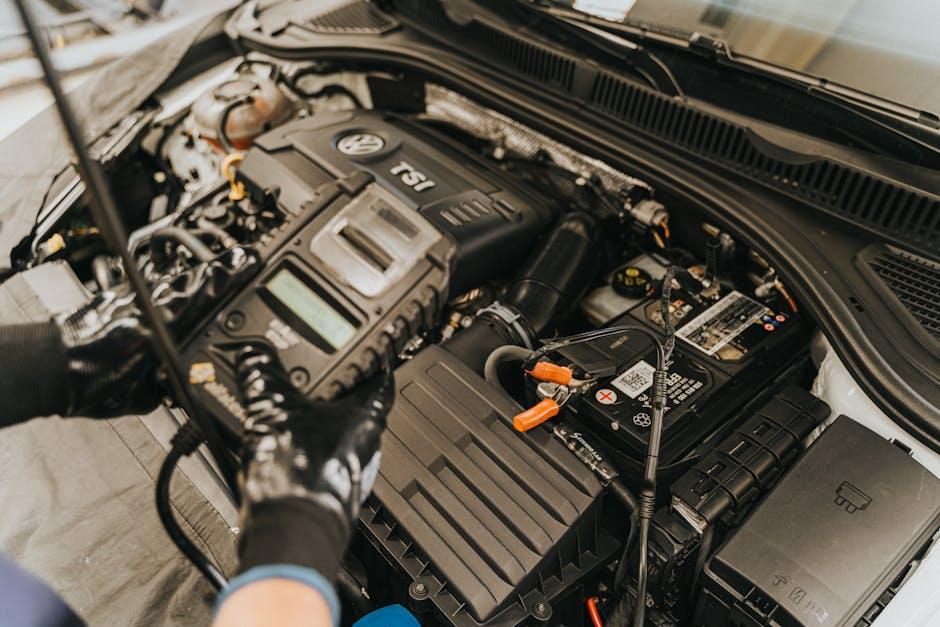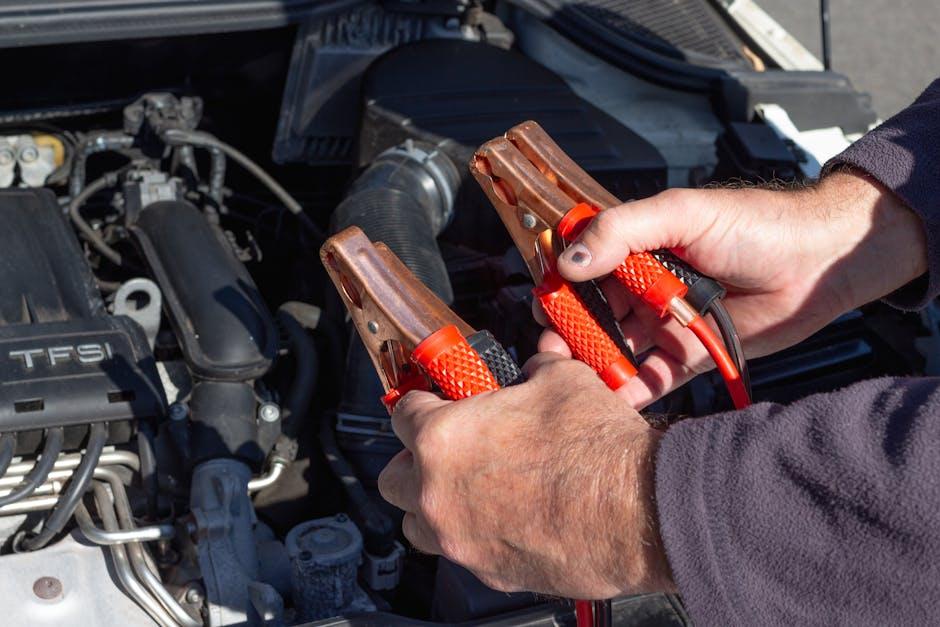Imagine stepping into your car, ready to embark on your day, only to find that familiar, frustrating silence greeting you instead of the reassuring roar of the engine. A dying car battery can feel like an unexpected roadblock, leaving you stranded and puzzled. But why does this little powerhouse run out of juice so often? Delving into the common causes behind a repeatedly failing battery reveals a mix of everyday habits, hidden mechanical issues, and environmental factors. Understanding these root causes can save you time, money, and a great deal of stress—so let’s explore why your car battery keeps dying and what you can do to keep it reliably charged.
Table of Contents
- Understanding the Common Causes of Car Battery Drain
- How Extreme Weather Impacts Battery Life and What You Can Do
- Identifying Parasitic Electrical Loads Draining Your Battery
- The Role of Driving Habits in Battery Performance
- Maintenance Tips to Prolong Your Car Battery’s Lifespan
- When to Replace Your Battery and Choosing the Right One for Your Vehicle
- Q&A
- In Retrospect

Understanding the Common Causes of Car Battery Drain
Many drivers face the frustrating issue of a car battery that won’t hold a charge, and more often than not, the culprit lies in everyday usage habits or unseen mechanical faults. Common pitfalls include leaving interior lights or accessories on after the engine is off, which slowly drains the battery. Additionally, extreme weather conditions, especially cold winters or scorching summers, can weaken the battery’s ability to maintain power. Even simple things like short trips that don’t allow the alternator enough time to recharge the battery contribute to its premature death.
Sometimes the problem isn’t just about how the battery is used but also how well it’s maintained. Faulty alternators, corroded battery terminals, or loose connections can silently sap your battery’s strength. Understanding these nuances can help you pinpoint potential issues before they strand you. Below is a quick reference table highlighting frequent causes that car owners often overlook:
| Common Cause | Impact on Battery Life |
|---|---|
| Parasitic Drain (e.g., lights, electronics left on) | Rapid battery depletion overnight |
| Faulty Alternator | Battery not recharged during driving |
| Corroded Terminals | Poor electrical connection, inefficient charging |
| Extreme Temperatures | Reduced battery capacity and lifespan |
| Short Trips | Insufficient charging cycles |

How Extreme Weather Impacts Battery Life and What You Can Do
Extreme weather conditions can wreak havoc on your car battery, drastically shortening its lifespan or causing it to die unexpectedly. Cold weather, for instance, thickens the engine oil and slows down chemical reactions inside the battery, reducing its capacity to hold a charge. Conversely, scorching heat can accelerate battery fluid evaporation, damaging the internal structure and increasing the risk of corrosion. These temperature-induced stresses often leave drivers stranded, puzzled as to why their battery failed out of nowhere.
Fortunately, there are practical steps you can take to protect your battery from weather extremes and extend its life:
- Park in shaded or insulated areas during hot weather to minimize heat exposure.
- Use a battery blanket or insulating cover in freezing temperatures to keep it warm.
- Regularly check and clean battery terminals to prevent corrosion buildup.
- Test your battery’s health seasonally with a professional or a reliable multimeter.
| Condition | Impact on Battery | Recommended Action |
|---|---|---|
| Cold Weather | Reduced charge capacity | Use insulated covers |
| Hot Weather | Accelerated fluid loss | Park in shade |
| Humidity | Corrosion risk | Clean terminals regularly |

Identifying Parasitic Electrical Loads Draining Your Battery
When your car battery keeps dying, one common culprit is parasitic electrical loads. These are devices or systems that continue to draw power from the battery even when the ignition is off. While some electrical components like the clock, security alarm, or memory settings consume a small, constant amount of power, others may be malfunctioning or left on inadvertently, pulling excessive current and draining your battery rapidly. A sudden spike in parasitic drain can leave you stranded with a dead battery, so it’s crucial to pinpoint these sneaky offenders.
To identify parasitic drains, start by performing a simple current draw test using a digital multimeter. Connect the meter in series between the negative battery terminal and its cable, then observe the current reading with the car off. Typical acceptable draw values range between 25 to 50 milliamps. If the reading is higher, start isolating circuits by removing fuses one at a time until the current drops to normal levels. Common culprits include:
- Interior lights left on or faulty door switches
- Aftermarket accessories like alarms, GPS trackers, or stereo systems
- Badly wired or malfunctioning electronic modules
- Relays that fail to disengage properly
| Component | Expected Draw (mA) | Effect on Battery |
|---|---|---|
| Car Alarm System | 20–30 | Low drain, usually safe |
| Faulty Door Switch | 100+ | Significant drain, battery dies faster |
| Aftermarket Stereo | 50–200 | Moderate drain, depends on wiring |

The Role of Driving Habits in Battery Performance
How you drive your vehicle can have a significant impact on your car battery’s lifespan and overall performance. Frequent short trips may prevent the battery from fully charging, as the alternator doesn’t have enough time to replenish the energy used during startup. On the other hand, aggressive driving habits like rapid acceleration and frequent braking can place extra strain on your electrical system, causing the battery to work harder than necessary. Consistent, moderate driving promotes optimal battery health, allowing it to sustain a steady charge and perform efficiently.
- Short trips: Insufficient charging time.
- Stop-and-go traffic: Increased electrical demand.
- Aggressive acceleration: Battery strain due to power surges.
- Long highway drives: Ideal for battery conditioning and charging.
| Driving Habit | Effect on Battery | Best Practice |
|---|---|---|
| Short trips | Battery doesn’t fully recharge | Combine errands to lengthen driving time |
| Frequent stops | High electrical demand | Limit unnecessary engine starts |
| Aggressive driving | Increased battery load | Adopt smooth acceleration |
| Long drives | Optimal battery charging | Take regular extended trips |

Maintenance Tips to Prolong Your Car Battery’s Lifespan
Ensuring your car battery remains in peak condition requires a blend of regular inspections and smart habits. Start by cleaning the battery terminals every few months to prevent corrosion build-up, which can impede performance. Remember to turn off all electrical components like lights, radio, and climate control before shutting your car off to avoid any unnecessary battery drain. Additionally, consider using a battery maintainer if your vehicle is parked for extended periods, as this device keeps the battery charged without overloading it.
Temperature fluctuations can be a silent enemy to your battery’s longevity. Extreme heat accelerates fluid evaporation while cold reduces battery capacity, so parking in a shaded area or a garage can make a considerable difference. Regularly check the battery’s water level if it’s not maintenance-free, and tighten any loose connections to maintain a steady electrical flow. Below is a quick reference table highlighting maintenance frequency and recommended actions:
| Maintenance Task | Frequency | Recommended Action |
|---|---|---|
| Terminal Cleaning | Every 3 months | Use baking soda & water solution |
| Battery Charge Check | Every 6 months | Use a multimeter or visit a service |
| Water Level Check | Monthly (if applicable) | Top up with distilled water |
| Visual Inspection | Monthly | Check for cracks, swelling, or leaks |

When to Replace Your Battery and Choosing the Right One for Your Vehicle
Knowing the perfect moment to swap out your car battery can save you from unexpected stalls and inconvenient trips to the mechanic. Typically, if your battery is older than three to five years, it’s time to consider a replacement. However, battery life can vary widely depending on factors such as climate, driving habits, and electrical load. Pay attention to warning signs like slow engine cranking, dim headlights, or a “check engine” light that points to battery or charging issues. A quick test at an auto shop using a voltmeter or load tester can confirm whether your current battery still holds a healthy charge or is ready to give up the ghost.
Choosing the right replacement battery isn’t just about matching size and voltage; it requires balancing performance with your vehicle’s unique demands. Here are some key elements to keep in mind:
- Battery Size: Ensure it fits snugly in the battery tray and matches your vehicle’s specifications.
- Cold Cranking Amps (CCA): Higher CCA ratings provide better performance in cold weather.
- Reserve Capacity (RC): Indicates how long the battery can power your car’s essential systems if the alternator fails.
- Type & Brand: Opt for reputable brands with warranties to guarantee reliability.
| Vehicle Type | Recommended CCA | Average Lifespan |
|---|---|---|
| Compact Cars | 400-500 | 3-4 Years |
| SUVs & Trucks | 600-800 | 4-5 Years |
| Luxury Vehicles | 700-1000 | 3-5 Years |
Q&A
Q: Why does my car battery keep dying even though it’s relatively new?
A: A new battery can still drain quickly if there’s an underlying issue. Common culprits include faulty charging systems, parasitic electrical drains when your car is off, or extreme weather conditions that sap battery power unexpectedly.
Q: Can leaving my lights or accessories on cause my battery to die?
A: Absolutely! Even though it sounds simple, leaving headlights, interior lights, or accessories like the radio on can slowly or rapidly drain your battery. Always double-check before locking your car.
Q: How do extreme temperatures affect my car battery?
A: Both hot and cold weather are tough on batteries. Heat accelerates chemical reactions inside, reducing battery life, while cold temperatures slow down the battery’s ability to deliver power, making it harder to start your car.
Q: What is a parasitic drain and how does it kill my battery?
A: Parasitic drain happens when an electrical component continues to draw power even after you switch off your car. Things like malfunctioning alarms, interior lights that don’t shut off, or aftermarket electronics can stealthily drain your battery over time.
Q: Could my alternator be the reason my battery keeps dying?
A: Yes, the alternator charges your battery while the engine runs. If it’s failing, your battery won’t recharge properly, causing it to drain more quickly. A quick test at the mechanic can confirm if the alternator is at fault.
Q: How often should I have my car battery checked?
A: It’s a good habit to have your battery tested at least once a year, especially before summer or winter. Regular checkups help catch potential problems before they leave you stranded.
Q: Are there maintenance tips to extend my car battery’s life?
A: Keep battery terminals clean and free of corrosion, ensure your car’s electrical system is functioning properly, and avoid short trips that don’t allow the battery to recharge fully. These simple steps can keep your battery healthier longer.
Q: When is it time to replace my car battery?
A: Typically, car batteries last three to five years. If your battery is older, frequently dies, or shows visible signs of wear like leaks or corrosion, it’s wise to replace it sooner rather than later.
Q: Can a bad battery affect other parts of my car?
A: Yes. A failing battery can put extra strain on the alternator and starter motor, potentially causing premature wear on these components. Keeping your battery in good shape helps maintain overall vehicle health.
In Retrospect
In the end, a dying car battery is more than just an inconvenient setback—it’s a signal from your vehicle that something beneath the surface needs attention. Whether it’s a sneaky electrical drain, a worn-out component, or simply the slow march of time, understanding why your battery keeps losing its charge empowers you to take control of the situation. So next time your engine hesitates, remember: beneath that stubborn power loss lies a story waiting to be uncovered and solved. Drive on with insight, and keep your journeys charged with confidence.

